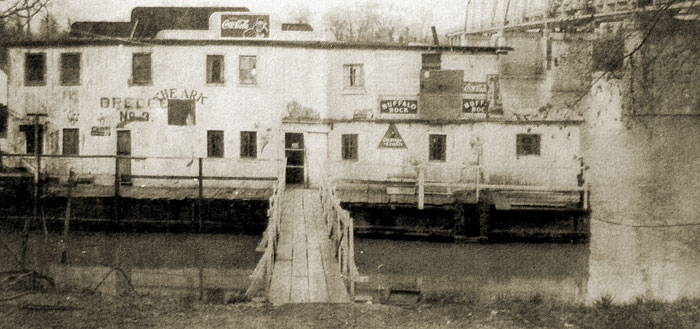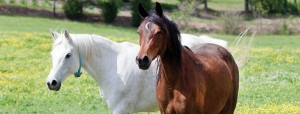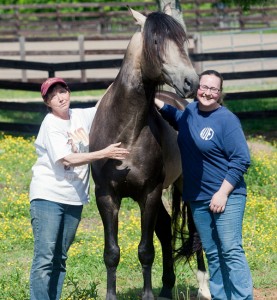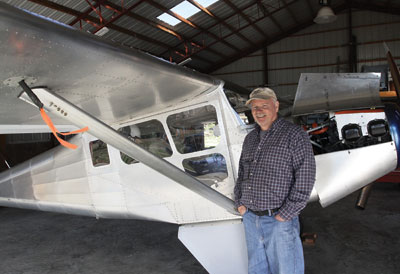From skirting liquor laws to finding fame as the place for catfish
Story by Jerry C. Smith
Photos by Jerry Martin
Submitted photos
 St. Clair folks are passionate about two basic food groups: barbecue and catfish. While the debate still rages among barbecue aficionados, the Pell City/Riverside area hosts a restaurant called The Ark, which has for decades set a gold standard in the catfish genre.
St. Clair folks are passionate about two basic food groups: barbecue and catfish. While the debate still rages among barbecue aficionados, the Pell City/Riverside area hosts a restaurant called The Ark, which has for decades set a gold standard in the catfish genre.
They also serve steaks, frog legs, shrimp and other fine fare, but the owner attests that about 60 percent of Ark customers ask for catfish. In fact, you can decline a menu and simply hold up one, two or three fingers to indicate how many fillets you want with your fries, slaw and hushpuppies.
Their Alabama pond-raised, deep-fried catfish entrees are excruciatingly delicious and served in a warm, home-style venue whose long, colorful heritage dates back to the Roaring Twenties. The Ark’s bio is like a story made for Hollywood.
At one time, St. Clair County was dry. If you wanted alcoholic spirits, you either went to Jefferson County or to a local bootlegger. Things got even tighter during Prohibition, when alcohol became illegal everywhere.
But E.O. “Red” Thompson had a better idea. He bought an old dredge barge at salvage, formerly used for deepening river channels and clearing debris, refitted it as a speakeasy, and christened it The Ark.
Thompson anchored it about 30 feet from the west bank of the Coosa River, near present-day US Highway 78. The Coosa borderlines St. Clair and Talladega counties, so The Ark was technically in either (or neither) county, depending on from which direction the law was coming.
It was known to be a rip-roaring establishment, catering to most any vice you can name. Patrons boarded The Ark from their boats, or they could use a 4-foot-wide catwalk. In a 1990 Birmingham News story by Marie West Cromer, George Scisson of Riverside related, “More than one inebriated customer had trouble getting back to shore on that walkway.”
 Scisson continued, “They served river catfish and hushpuppies and all the beer you wanted, and neither St. Clair or Talladega law could touch them because it wasn’t located in either county. … I was too young to buy beer then, but I drank it on the old Ark. Beer was 15 cents a can, and a sign said, ‘All the catfish and hushpuppies you can eat, 60 cents.’ They put more fish in a sandwich for 35 cents back then than you get on a platter today.”
Scisson continued, “They served river catfish and hushpuppies and all the beer you wanted, and neither St. Clair or Talladega law could touch them because it wasn’t located in either county. … I was too young to buy beer then, but I drank it on the old Ark. Beer was 15 cents a can, and a sign said, ‘All the catfish and hushpuppies you can eat, 60 cents.’ They put more fish in a sandwich for 35 cents back then than you get on a platter today.”
Eventually, the original Ark caught fire, burned and sank. Undaunted, Mr. Thompson built a new log building on the river’s west bank. In Cromer’s story, the late Bob Cornett described this second Ark, “It was a rustic building … breezes from the river whistled through cracks in the floor and walls. … Some customers came by boat, and some were served from a pier.”
Ferry boats were used in those days to cross the Coosa, which was much narrower than today’s impounded waterway. In 1938, a new highway bridge was built on US 78. Because the bridge had replaced a ferry, it was opened as a toll bridge at first. In fact, Cornett’s father, Sam Cornett, operated the tollbooth.
Thompson was described as a “gruff old gentleman who ran a tight ship.” Cornett told of two men who told the cashier their food was no good and walked out without paying their bill. Thompson forcibly brought them back in, and told them, “Now pay the lady for what you done et.”
Waitress Hazel Castleberry, who invented The Ark’s special fish sauce that’s still in use today, recalls her days of service with Thompson. “Menus were not used back then. Customers just told us what they wanted, and we wrote it down quick and got away from them as fast as we could because Thompson didn’t believe in his hired help socializing with customers.”
But, alas, this new Ark also burned. Thompson built yet another roadhouse on the other side of US 78, where today’s Ark is located, and renamed it Red’s Place. It was a true Southern hangout in every sense, much like the Boar’s Nest on Dukes of Hazzard. They say Thompson was much like Boss Hogg, and Sheriff Roscoe P. Coltrane also had a counterpart at Red’s. Many St. Clair middle-agers will tell you Red’s did almost as much business from the back door as from the front.
Eventually, the aforementioned Mr. Cornett purchased Red’s Place, and named it The Ark once again. That was some 34 years ago, just a few days after Bob and Sylvia Cornett were wed. Before long, the Cornetts’ Ark had built a reputation for fine food, atmosphere and community appreciation that still prevails today.
The Ark’s ambience is something you just have to experience for yourselves. In an Anniston Star item by George Smith, Cornett described The Ark’s decor: “This is no hoity-toity joint. Anyone is welcome here. Our only requirement is that you wear a shirt and shoes, and the reason for that is the health department. Shoot, if it were not for [them], we probably wouldn’t worry about shoes or shirts.”
Smith added, “The walls are Ponderosa pine paneling, the ceiling is plywood and batten, the tables wear checkered oilcloth, and the booths are hard as any church bench you can remember.”
It’s always been blessed with loyal, long-term employees. Hazel Castleberry’s daughter, Alesia Moore; her sister, Tammy Truss; and Tammy’s daughter Sheree Smith, have worked there for years.
Considering its present atmosphere and colorful past, The Ark might well be described as a road house for catfish lovers. Autographed photos, media clippings and other memorabilia cover every inch of wall space.
It’s been written up in a host of local and national newspapers and food and travel magazines. The Ark’s catfish platter is listed on the Alabama Bureau of Tourism and Travel’s coveted “100 Dishes to Eat Before You Die” list. The Ark was also pictured in a 1995 New York Times story by a photographer sent here when St. Clair first went Republican.
It has been featured in USA Today’s “Top Ten Catfish Restaurants In The Nation,” an annual list compiled by the Catfish Institute of America. In a 1997 St. Clair News-Aegis story by Stan Griffin, Bob Cornett said, “Anyone who wouldn’t take a national honor like that seriously would be very foolish. I feel very fortunate, and we try to maintain the quality of our food service to justify such a ranking.”
In a recent interview, current owner Sylvia Cornett named a few celebrities she and her late husband, Bob, have hosted. They include former Gov. Don Seigelman, former state Sen. Larry Means, movie director Terry Gilliam, “Little Jim” Folsom, Supreme Court Justice Mark Kennedy (George C. Wallace’s son-in-law), the Temptations on tour and CNN reporter John King.
Practically every major NASCAR driver has graced their tables, including Richard and Kyle Petty, Jim and Bill France, Neil Bonnett, Ryan Newman, Buddy “Leadfoot” Baker, the legendary Red Farmer who built Talladega Speedway, Mario Andretti, Tony Stewart, Dale Earnhart Jr., and Bobby and Davey Allison, to mention a few.
They’ve hosted large business groups from Norway and Japan, including the Honda folks. In fact, the deal that brought the Honda assembly plant to Lincoln was signed over a catfish dinner at The Ark.
In all its various incarnations, The Ark has long been an integral part of eastern St. Clair’s civic persona. Many families have dined there for several generations. In fact, two of the restaurant’s most loyal patrons, Jim and Ann Riddle Burton of Low Gap, became engaged to wed while driving to The Ark in Jim’s new ‘65 Corvette.
They’ve been together ever since and are still devout Arkies. When asked how Jim and Ann have lived together so happily for more than 47 years, he replied, “We’ve never had an argument. But sometimes neighbors a block away can hear us reasoning together.”
The Burtons weren’t the only folks to link The Ark to matrimony. Gloria Anderson, who still works at The Ark, was married there. Bob Cornett himself gave away the bride, who wore a long, flowing white gown. After the ceremony, The Ark opened for business as usual.
Sylvia’s son, Warren Smith, related a story about the time when The Ark served dinner to a monkey. Other customers and wait staff did double takes as the little simian, about the size of a two-year-old child and well-dressed in a shirt and shorts, sat beside his (human) lady companion while sipping a drink.
Actually, he was a service monkey whose sole job was to push a medic alert button worn on a chain around his neck in the event his mistress had a sudden seizure. Smith said. “He had medical papers and everything, just like a seeing-eye dog, but nobody else knew that.”
The Cornett family is of St. Clair pioneer stock, almost from the time Pell City began. Cornett House Hotel was a frontier hostelry located near the railway in Pell City. It was heavily damaged in 1902 when a huge store of dynamite in a railroad warehouse blew up, doing some $1,500 worth of harm to the hotel (a very substantial sum more than a hundred years ago), also wrecking much of Pell City.
Mentored by noted Ashville author/historian Mattie Lou Teague Crow, Bob Cornett operated a popular local newspaper, the St. Clair Observer, before investing in The Ark. The Observer was later sold and absorbed into the present day St. Clair News-Aegis. Always the entrepreneur, Cornett had also owned a bar called The Fatted Calf, which he opened in 1967, just after St. Clair County voted to go ‘wet.’
Today’s Ark hosts a multitude of catfish fans, some of them third or fourth generation customers. The place teems with action during Race Week at Talladega. Regular customers often come from as far away as Georgia.
The Ark’s daily attendance is amazing, considering that they have only one tiny, time-worn sign out front, partially hidden by bushes. Like with any really successful restaurant, word of mouth is everything.
 They didn’t seem to give a hoot about their unusual surroundings of water instead of land. In fact, barn owls don’t hoot at all. Their vocal repertoire is more like a blood-curdling scream, the kind Alfred Hitchcock might fancy to play a role in a terrifying scene.
They didn’t seem to give a hoot about their unusual surroundings of water instead of land. In fact, barn owls don’t hoot at all. Their vocal repertoire is more like a blood-curdling scream, the kind Alfred Hitchcock might fancy to play a role in a terrifying scene. Barn owls hatch their young in the order the eggs were laid, so when the youngster climbed the ladder to look and came down saying there were three, she tried to correct him. When he didn’t give up, she ascended the ladder to see for herself and discovered the trio staring back at her.
Barn owls hatch their young in the order the eggs were laid, so when the youngster climbed the ladder to look and came down saying there were three, she tried to correct him. When he didn’t give up, she ascended the ladder to see for herself and discovered the trio staring back at her.

























































































